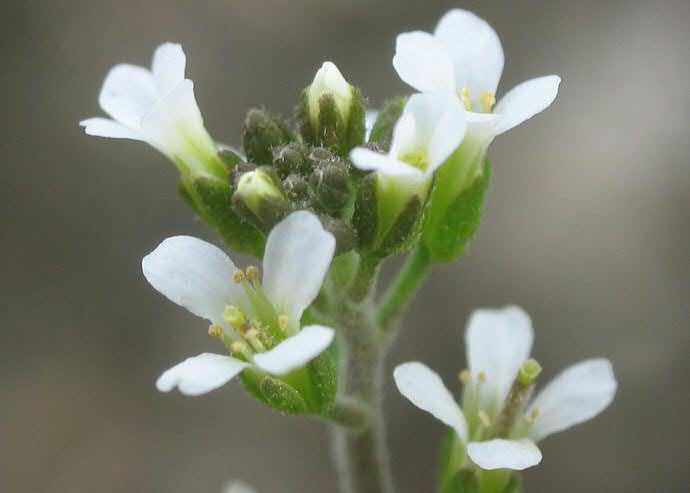Scientists obtain precise estimates of the epigenetic mutation rate

University of Groningen scientists have obtained the first precise estimates of how often epigenetic marks that influence gene activity appear or disappear in the plant Arabidopsis thaliana, a model organism in plant biology. This paves the way to a deeper understanding of the importance of epigenetic changes in plant evolution. The work will be published in the online Early Edition of the journal Proceedings of the National Academy of Sciences.
Epigenetic marks do not change the DNA sequence, but can affect the activity of genes. Although in most animals, including humans, these marks are believed to be completely reset in gametes, in plants they can be stably inherited for many generations. This was shown previously by the research group of Frank Johannes, Assistant Professor of Bioinformatics at the University of Groningen and co-lead author of the new paper.
Mutation rate
It is as yet not known how important epigenetic marks are in plant evolution. One way to assess this is to look for ‘signatures’ of natural selection on these marks. However, for this to work it is necessary to know the precise epigenetic mutation rate, which is the rate with which these marks appear and disappear spontaneously at a specific site over generations.
32 generations
In close collaboration with researchers from the European Research Institute for the Biology of Ageing (University of Groningen and University Medical Center Groningen) and the University of Georgia (USA), the Johannes group used material from an inbred line of the plant Arabidopsis thaliana (thale cress), which is often used in genetic research. They analysed material from up to 32 generations and checked the entire genome for one specific epigenetic mark: the methylation of cytosine nucleotides.
‘We chose this mark because we know it is heritable between generations and can affect gene expression’, Johannes explains. When this task was complete, mathematical modelling was used to estimate the epigenetic mutation rate. ‘Basically, our analysis shows that epigenetic mutations are about 100,000 times more likely than DNA sequence mutations. We have also seen that not all cytosine nucleotides are created equal: some are more prone to lose than to gain methylation, while other cytosines ‘prefer’ methylation gain over loss. While much of this is consistent with what was already known, we are now in a position to quantify these dynamics precisely on a genome-wide scale.’
Evolutionary timescales
A first analysis also showed that nearly all epigenetic mutations are neutral, meaning that they do not affect gene expression. Johannes: ‘This was to be expected, as the vast majority of sequence mutations are also neutral. But using our epigenetic mutation rates, we can now look at natural populations with fresh eyes and ask whether any selection on these epigenetic mutations is present over evolutionary timescales. We think that this will be an important step forward in the debate about the role of epigenetics in plant evolution. It will make the whole discussion much more rigorous.’
Undergraduate
Another striking feature of the new paper that Johannes wants to stress is the fact that the first author, Adriaan van der Graaf, participated in the project as an undergraduate. ‘He came to do a Bachelor’s research project and was very curious and showed lots of initiative. In the end, he did most of the bioinformatics analysis needed to nail down the epigenetic mutation rate.’ Van der Graaf, who was appointed as a research assistant in the Johannes group for a short period after his graduation in order to finish work on the paper, is now pursuing a Master’s degree at the University of Groningen, with a strong emphasis on bioinformatics.
Breeders
Johannes and his colleagues will continue to work on epigenetic mutations. Apart from the fundamental knowledge on plant evolution that this may provide, like how the ‘methylome’ evolves in relation to genetic variation, it could be of interest to plant breeders as well. Johannes: ‘As epigenetic mutations are stable through a significant number of generations, this could be a tool for plant breeders to increase crop yield. At present, it is just not known how to best engineer and stabilize such epigenetic changes.’
More information
Contact: Dr Frank Johannes, phone +31 50 363 4765
Reference: Van der Graaf A, Wardenaar R, Neumann DA, Taudt A, Shaw RG, Jansen RC, Schmitz RJ, Colomé-Tatché M, Johannes F. Rate, spectrum, and evolutionary dynamics of spontaneous epimutations. doi/10.1073/pnas.1424254112.
| Last modified: | 12 March 2020 9.46 p.m. |
More news
-
03 April 2025
IMChip and MimeCure in top 10 of the national Academic Startup Competition
Prof. Tamalika Banerjee’s startup IMChip and Prof. Erik Frijlink and Dr. Luke van der Koog’s startup MimeCure have made it into the top 10 of the national Academic Startup Competition.
-
01 April 2025
NSC’s electoral reform plan may have unwanted consequences
The new voting system, proposed by minister Uitermark, could jeopardize the fundamental principle of proportional representation, says Davide Grossi, Professor of Collective Decision Making and Computation at the University of Groningen
-
01 April 2025
'Diversity leads to better science'
In addition to her biological research on ageing, Hannah Dugdale also studies disparities relating to diversity in science. Thanks to the latter, she is one of the two 2024 laureates of the Athena Award, an NWO prize for successful and inspiring...
